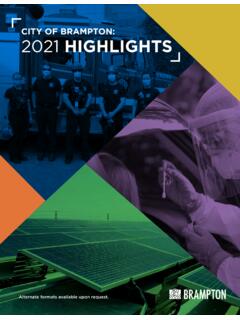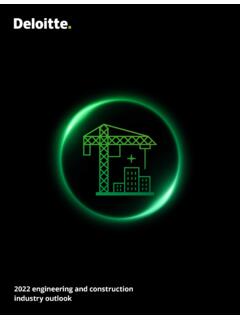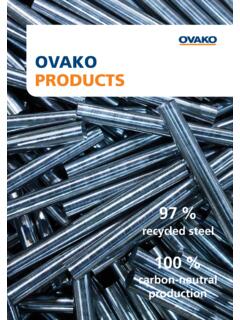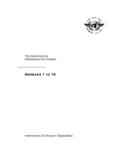Transcription of Solar Tracking Application - Rockwell Automation
1 Solar Tracking Application A Rockwell Automation White Paper Solar trackers are devices used to orient photovoltaic panels, reflectors, lenses or other optical devices toward the sun. Since the sun s position in the sky changes with the seasons and the time of day, trackers are used to align the collection system to maximize energy production. Several factors must be considered when determining the use of trackers. Some of these include: the Solar technology being used, the amount of direct Solar irradiation, feed-in tariffs in the region where the system is deployed, and the cost to install and maintain the trackers.
2 Example: Single Axis Tracker used for Solar Photovoltaic (PV) Panel Applications Example: Single Axis Tracker used for Solar Thermal Parabolic Trough Applications 2 | Solar Tracking Application Concentrated applications like concentrated photovoltaic panels (CPV) or concentrated Solar power (CSP) require a high degree of accuracy to ensure the sunlight is directed precisely at the focal point of the reflector or lens. Non-concentrating applications don t require Tracking but using a tracker can improve the total power produced by the system.
3 Photovoltaic systems using high efficiency panels with trackers can be very effective. There are many types of Solar trackers, of varying costs, sophistication, and performance. The two basic categories of trackers are single axis and dual axis. Single axis Solar trackers can either have a horizontal or a vertical axis. The horizontal type is used in tropical regions where the sun gets very high at noon, but the days are short. The vertical type is used in high latitudes where the sun does not get very high, but summer days can be very long. In concentrated Solar power applications, single axis trackers are used with parabolic and linear Fresnel mirror designs.
4 Dual axis Solar trackers have both a horizontal and a vertical axis and thus they can track the sun's apparent motion virtually anywhere in the world. CSP applications using dual axis Tracking include Solar power towers and dish (Stirling engine) systems. Dual axis Tracking is extremely important in Solar tower applications due to the angle errors resulting from longer distances between the mirror and the central receiver located in the tower structure. Many traditional Solar PV applications employ two axis trackers to position the Solar panels perpendicular to the sun s rays.
5 This maximizes the total power output by keeping the panels in direct sunlight for the maximum number of hours per day. Example: Dual Axis Tracker for Solar Photovoltaic (PV) Panel Applications Example: Dual Axis Tracker for Solar Thermal Dish/Engine Applications 3 | Solar Tracking Application Tracker Components The main elements of a Tracking system are as follows: Sun Tracking algorithm: This algorithm calculates the Solar azimuth and zenith angles of the sun. These angles are then used to position the Solar panel or reflector to point toward the sun. Some algorithms are purely mathematical based on astronomical references while others utilize real-time light-intensity readings.
6 Control unit: The control unit executes the sun Tracking algorithm and coordinates the movement of the positioning system. Positioning system: The positioning system moves the panel or reflector to face the sun at the optimum angles. Some positioning systems are electrical and some are hydraulic. Electrical systems utilize encoders and variable frequency drives or linear actuators to monitor the current position of the panel and move to desired positions. Drive mechanism/transmission: The drive mechanisms include linear actuators, linear drives, hydraulic cylinders, swivel drives, worm gears, planetary gears, and threaded spindles.
7 Sensing devices: For trackers that use light intensity in the Tracking algorithm, pyranometers are needed to read the light intensity. Ambient condition monitoring for pressure, temperature and humidity may also be needed to optimize efficiency and power output. o Limit switches are used to control speed and prevent over travels. The mechanical over travel limits are used to prevent tracker damage. o Elevation feedback is accomplished by either 1) a combination of limit switches and motor encoder counts, or 2) an inclinometer (a sensor that provides the tilt angle). o An anemometer is used to measure wind speed.
8 If the wind conditions are too strong, the panels are usually driven to a safe horizontal position and remain in the safety position until the wind speed falls below the set point. Tracker Control Algorithms Tracker control algorithms typically incorporate a control strategy that is a hybrid between open-loop and closed-loop control. The open-loop component is needed because the sun can be obscured by clouds, eliminating or distorting the feedback signals. The closed-loop component is needed to eliminate errors that result from variability in installation, assembly, calibration, and encoder mounting.
9 Closed loop systems track the sun by relying on a set of lenses or sensors with a limited field of view, directed at the sun, and are fully illuminated by sunlight at all times. As the sun moves, it begins to shade one or more sensors, which the system detects and activates motors or actuators to move the device back into a position where all sensors are once again equally illuminated. Open loop systems track the sun without physically following the sun via sensors (although sensors may be used for calibration). These systems typically employ electronic logic which controls device motors or actuators to follow the sun based on a mathematical formula.
10 4 | Solar Tracking Application The NREL National Renewable Energy Laboratory Technical Report (NREL/TP-560-34302 Revised January 2008) provides information and code examples for a Solar Position Algorithm for Solar Radiation Applications. The accuracy that can be achieved using this algorithm is equal to +/- in the period from year 2000 to 6000. This report is a step by step procedure for implementing an algorithm to calculate the Solar zenith and azimuth angles. Rockwell Automation has utilized this report to build a standard logic template that can be implemented by OEMs developing tracker equipment.


















